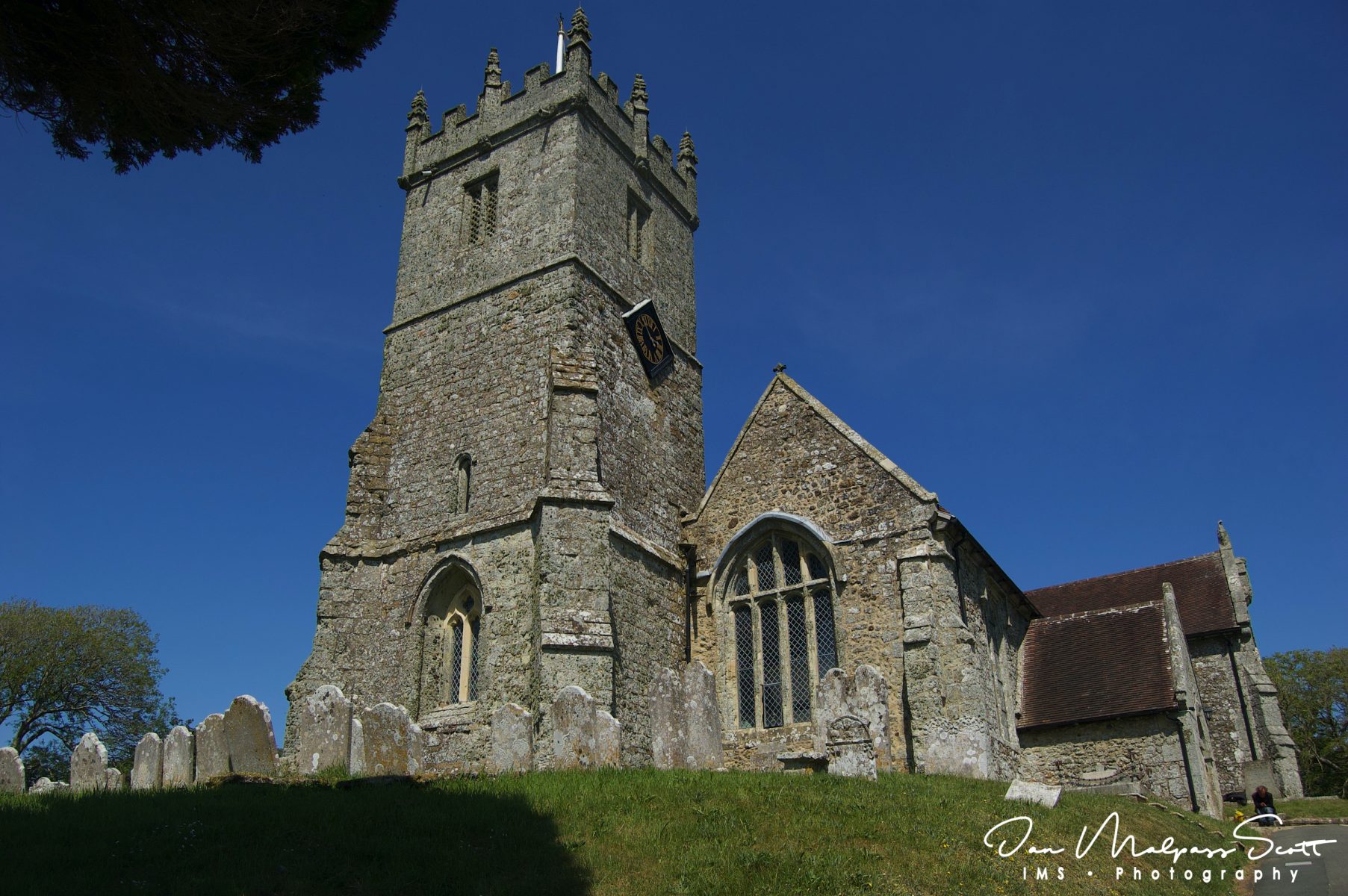All Saints’ Church, Godshill, Isle of Wight.
All Saints’ Church, Godshill is a parish church in the Church of England located in Godshill, Isle of Wight.
According to legend, the original foundations for the church were laid in a flat, easily accessible site; each morning they were found transferred to the hill where the church exists today. Eventually the builders gave up building it in the planned flat location and built it on the hill.
The church is medieval. It is noted for its medieval wall painting of a Lily crucifix one of only two in Europe. The Lily painting was whitewashed out to save it from destruction during the Reformation. It remained hidden until the 19th century, when it was rediscovered.
Godshill, dedicated to All Saints, “a spacious cruciform edifice, with a singular bell-turret on the south gable,” consists of a chancel, nave, cross aisles, and tower. From its architecture it is obviously of ancient foundation, and a portion of the present edifice may have stood upon the sacred hill when Fitz-Osbert gave it to the Abbey of Lire. Most of the building, however, is Transitional Norman. Its wealth was very great, from the extent of the adjacent demesnes, and in 1404 it was assessed at 100 marks yearly. When King Edward VI’s commissioners sold the superfluous plate, it realized not less than £54, 2s. 7d. The advowson was presented, in 1623, to Queen’s College, Oxford, by King Charles I.
The tower contains a ring of 6 bells which were all cast by Llewellin and James, and are the only ring of bells by this founder on the Island. The biggest weighs 8cwt.
The churchyard contains a Commonwealth war grave of a Royal Engineers soldier of World War I. Within the church is a memorial to Admiral of the Fleet Sir Dudley Pound, who died in World War II having been First Sea Lord of the Admiralty at its outbreak.


